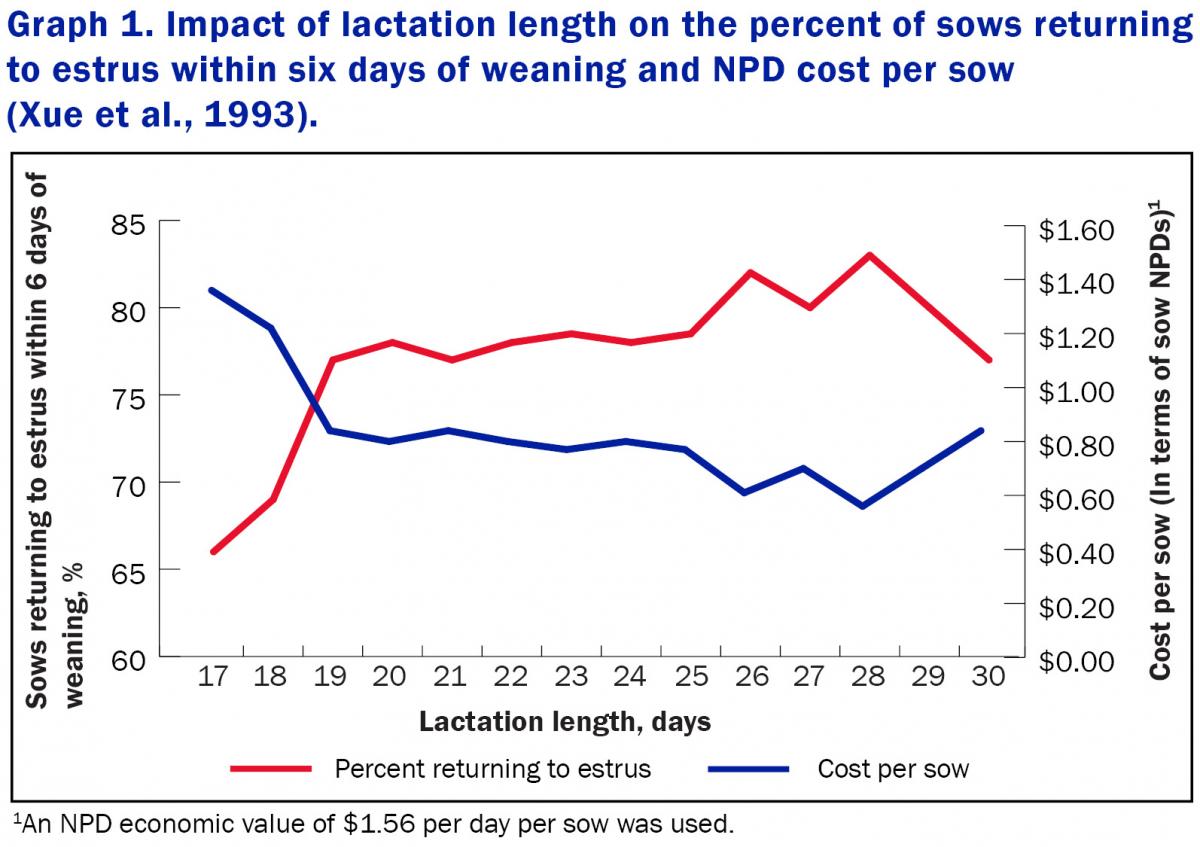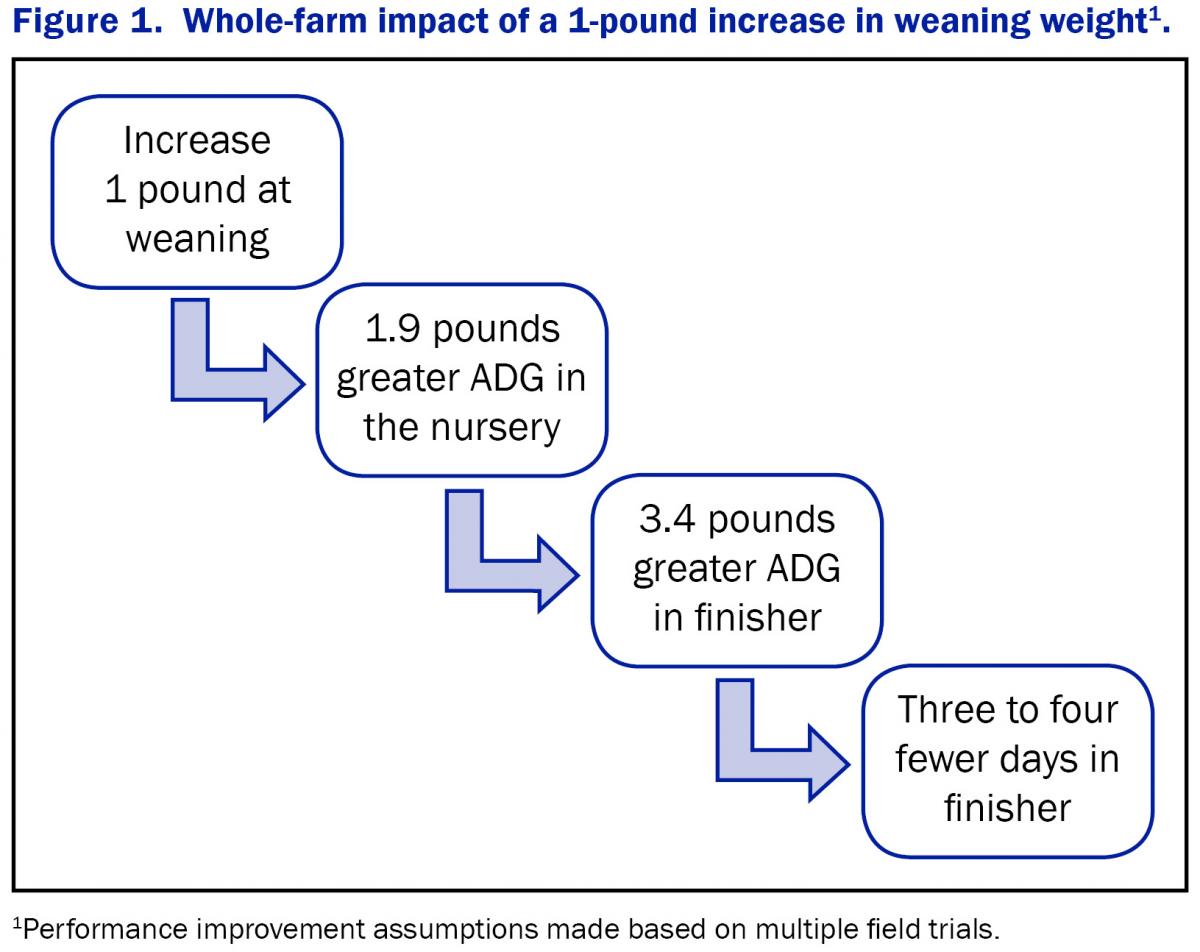
Navigating the Storm: Part two – Sow and pre-weaned pig management
In part one of “Navigating the Storm,” we addressed management around the time of marketing and how we analyze closeout information to improve profitability. In part two, we will look at sow and pre-weaned pig management to improve profitability.
Heightening sow management
Focused goals, such as improving the number of pigs per sow per year and reducing pre-weaning mortality, are appropriate measures for the evaluation of individual sow performance, but they may not be good metrics to evaluate total farm profitability. When market prices decline, individual sow metrics need to be balanced with throughput, sow non-productive days (NPD) and replacement rate. By our own estimates, and those of others (Ron Ketchum and Mark Rix, Swine Management Services, LLC), the cost of a sow NPD can range from $1.56 to $2.25 per sow, when accounting for feed, space, labor and management. Graphs 1 and 2 demonstrate how managing sow lactation length, as it applies to the individual producer’s system and production goals, can set up the farm for optimal profit potential by minimizing wean-to-estrus interval and sow non-productive days, and maximizing farrowing rate and litter weaning weight.
Graph 1 demonstrates that, in general, as lactation length increases, a greater percentage of sows return to estrus within six days of weaning. This, in turn, decreases the NPD cost per sow.

As demonstrated in Graph 2, farrowing rate improves as lactation length increases, which equates to a decreased NPD cost per sow.

Make the most out of the suckling period
In strong markets, focusing on pre-weaning mortality to maximize farrowing facility output is key to capitalizing on income potential. In poor markets, however, focusing on piglet quality attributes, such as birth weight and weaning weight, can have a greater impact on the cost of production. Understanding how birth weight, weaning weight and piglet survivability impact your bottom line is essential to establishing farm protocols to maximize profitability.
Graph 3 describes the impact birth weight has on finisher costs (feed and yardage costs). The difference in finisher costs between higher and lower birth weights is approximately $5 per pig.

Figure 1 describes how a 1-pound increase in weaning weight can decrease the number of days in the finisher, which can then reduce finisher costs by approximately $2.04 per pig.

Contact your Vita Plus consultant for more information on any topic discussed in this series. “Navigating the Storm: Part three” will feature information on feeder and water management, as well as the economic impacts of out-of-feed events.
| Category: |
Animal handling Animal health Markets and economics Swine Performance |

